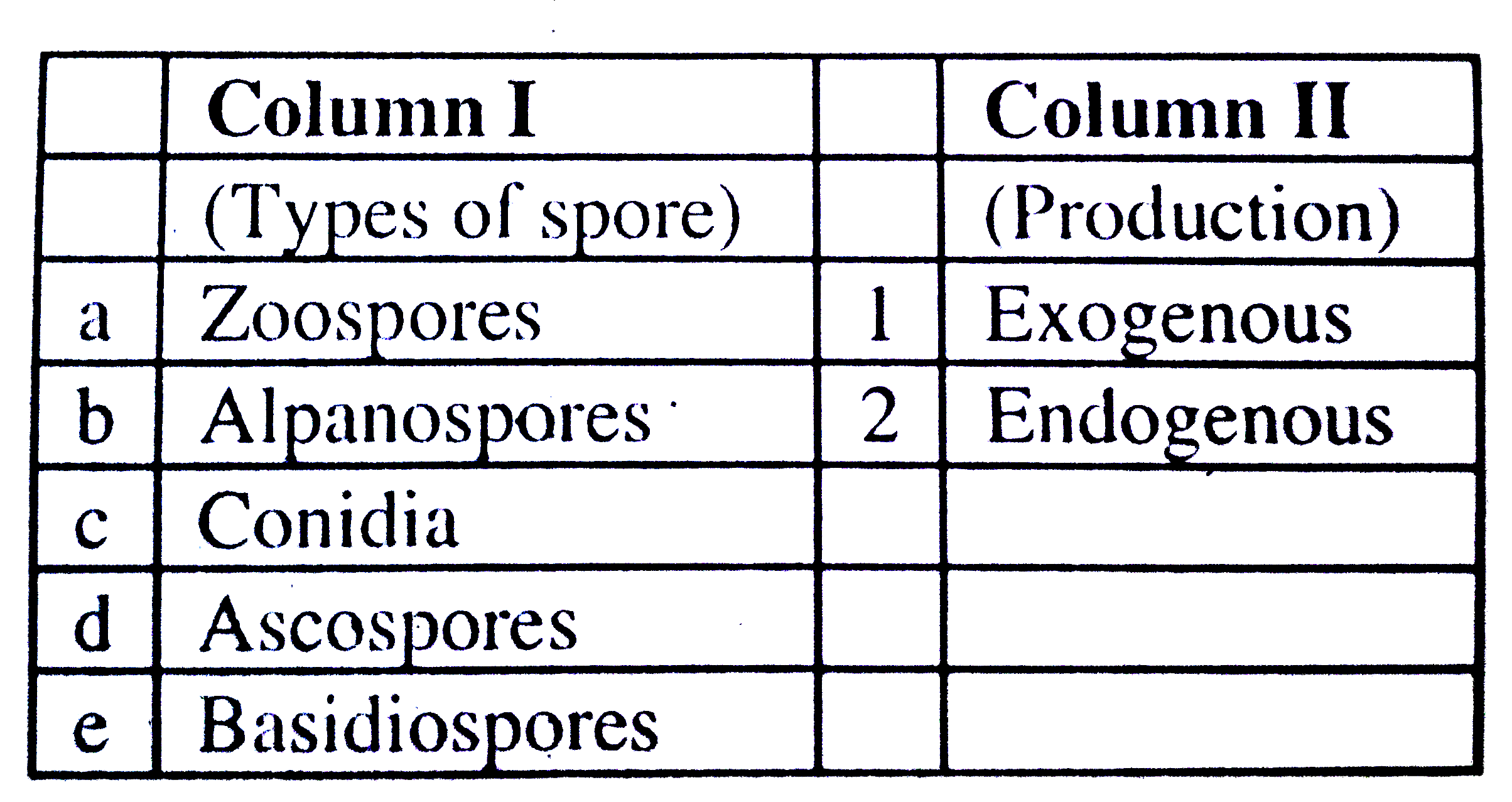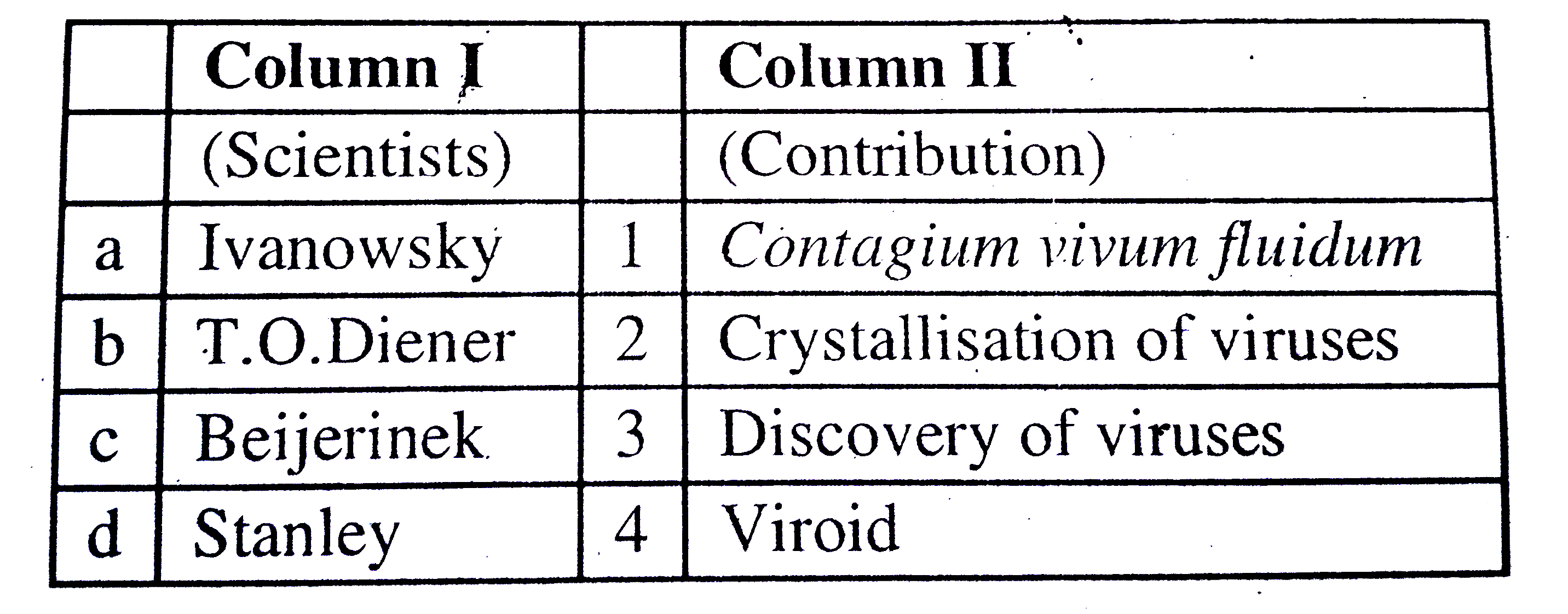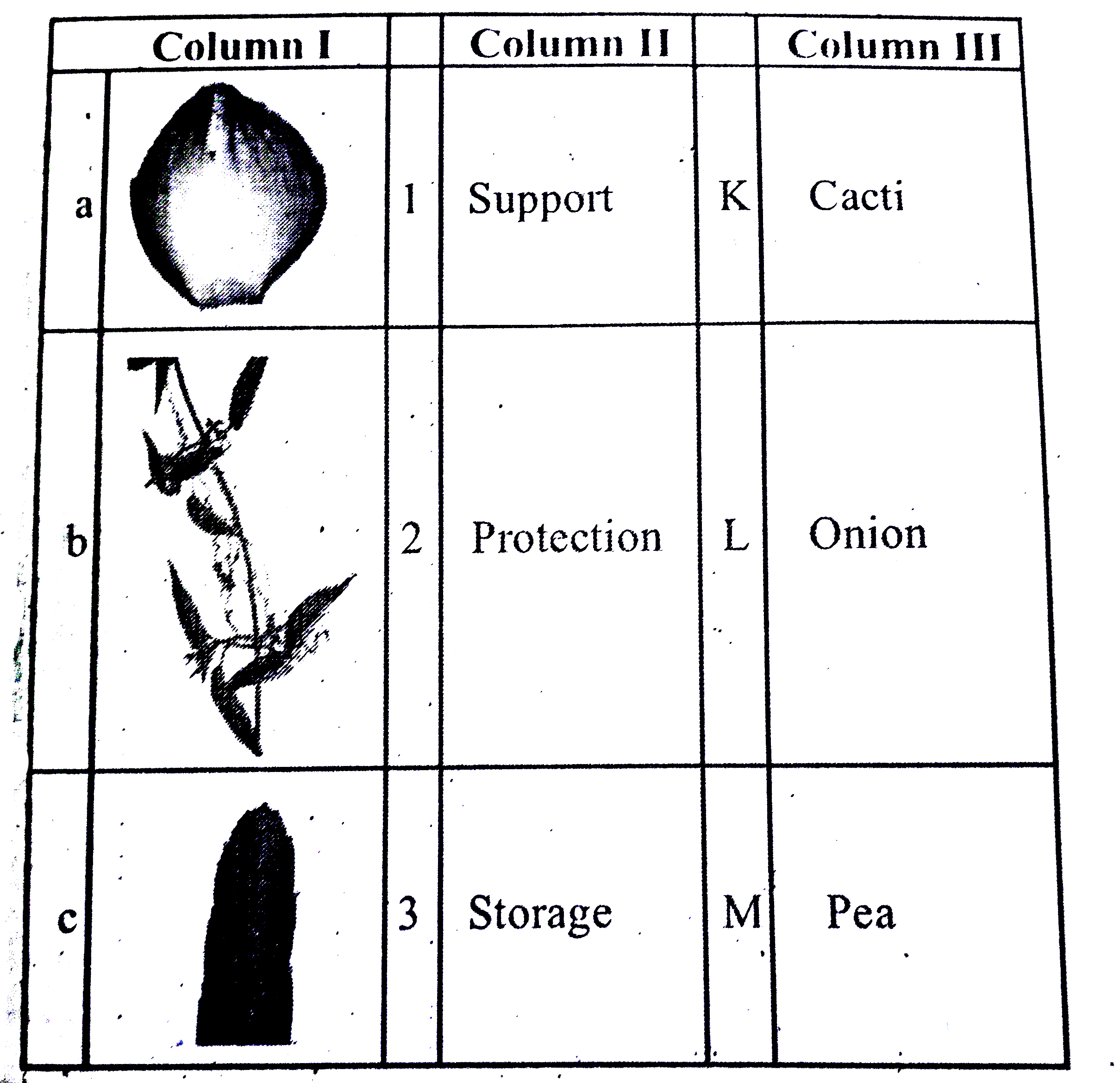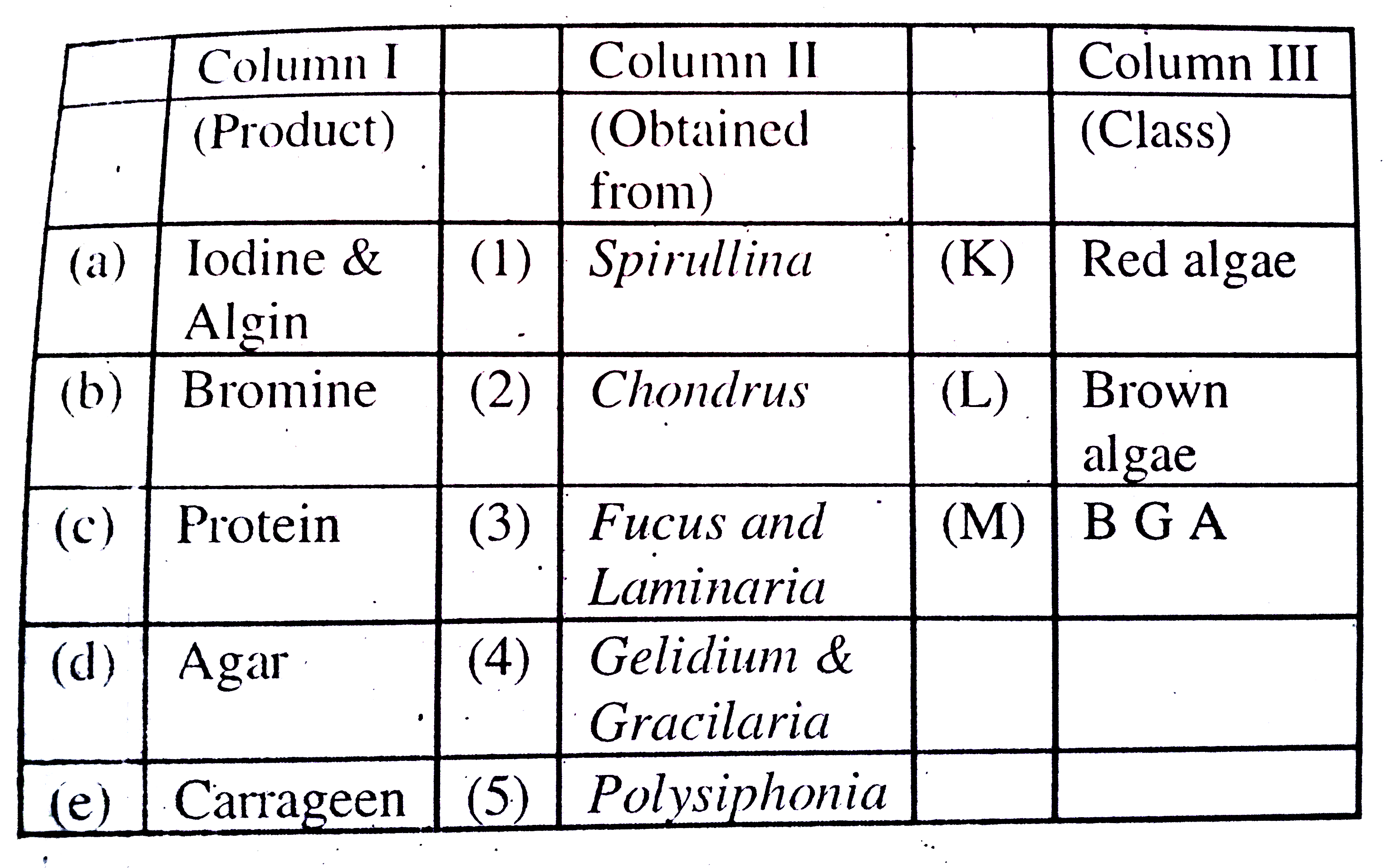Match the following and choose the correct combination from the options given
∣∣
∣
∣
∣
∣
∣∣ Column I (Group Protista) Column II(Example)A. Chrysophytesi. ParameciumB. Dinoflagellatesii. EuglenaC. Euglenoidsiii. GonyaulaxD. Protozonsiv. Diatoms∣∣
∣
∣
∣
∣
∣∣
a-iv, b-iii, c-ii, d-i
a-ii, b-iii, c-I, d-iv
a-ii, b-iv, c-iii, d-i
a-iii, b-iv, c-I, d-ii
The correct Answer is:A
To solve the matching question regarding the groups in Kingdom Protista and their examples, we will analyze each group and find the correct match from the options given.
1. Identify the Groups in Column I:
- A. Chrysophytes
- B. Dinoflagellates
- C. Euglenoids
- D. Protozoans
2. Identify the Examples in Column II:
- i. Paramecium
- ii. Euglena
- iii. Gonyaulax
- iv. Diatoms
3. Match Each Group with Its Example:
- A. Chrysophytes: These are commonly known as golden algae, which are primarily photosynthetic. A well-known example of chrysophytes is diatoms. So, A matches with iv. Diatoms.
- B. Dinoflagellates: These are unicellular organisms, many of which are photosynthetic and can produce light (bioluminescence). An example of dinoflagellates is Gonyaulax. Thus, B matches with iii. Gonyaulax.
- C. Euglenoids: These organisms are characterized by their ability to change shape and are often motile due to flagella. A prominent example of euglenoids is Euglena. Therefore, C matches with ii. Euglena.
- D. Protozoans: These are unicellular eukaryotic organisms, many of which are motile. A common example of protozoans is Paramecium. Hence, D matches with i. Paramecium.
4. Compile the Matches:
- A → iv (Diatoms)
- B → iii (Gonyaulax)
- C → ii (Euglena)
- D → i (Paramecium)
5. Final Combination:
- A (Chrysophytes) - iv (Diatoms)
- B (Dinoflagellates) - iii (Gonyaulax)
- C (Euglenoids) - ii (Euglena)
- D (Protozoans) - i (Paramecium)
Conclusion:
The correct combination is:
- A → iv
- B → iii
- C → ii
- D → i
- A. Chrysophytes
- B. Dinoflagellates
- C. Euglenoids
- D. Protozoans
- i. Paramecium
- ii. Euglena
- iii. Gonyaulax
- iv. Diatoms
- A. Chrysophytes: These are commonly known as golden algae, which are primarily photosynthetic. A well-known example of chrysophytes is diatoms. So, A matches with iv. Diatoms.
- B. Dinoflagellates: These are unicellular organisms, many of which are photosynthetic and can produce light (bioluminescence). An example of dinoflagellates is Gonyaulax. Thus, B matches with iii. Gonyaulax.
- C. Euglenoids: These organisms are characterized by their ability to change shape and are often motile due to flagella. A prominent example of euglenoids is Euglena. Therefore, C matches with ii. Euglena.
- D. Protozoans: These are unicellular eukaryotic organisms, many of which are motile. A common example of protozoans is Paramecium. Hence, D matches with i. Paramecium.
- A → iv (Diatoms)
- B → iii (Gonyaulax)
- C → ii (Euglena)
- D → i (Paramecium)
- A (Chrysophytes) - iv (Diatoms)
- B (Dinoflagellates) - iii (Gonyaulax)
- C (Euglenoids) - ii (Euglena)
- D (Protozoans) - i (Paramecium)
The correct combination is:
- A → iv
- B → iii
- C → ii
- D → i
Topper's Solved these Questions
- KINGDOM PROTISTA (UNICELLULAR EUKARYOTES)BOOK - DINESH PUBLICATION ENGLISHCHAPTER - KINGDOM PROTISTA (UNICELLULAR EUKARYOTES)EXERCISE - CHECK YOUR GRASP
19 Videos
- KINGDOM PROTISTA (UNICELLULAR EUKARYOTES)BOOK - DINESH PUBLICATION ENGLISHCHAPTER - KINGDOM PROTISTA (UNICELLULAR EUKARYOTES)EXERCISE - CHECK YOUR GRASP
19 Videos
- KINGDOM PLANTAE OR METAPHYTA BOOK - DINESH PUBLICATION ENGLISHCHAPTER - KINGDOM PLANTAE OR METAPHYTA EXERCISE - CYG
20 Videos
- LEAFBOOK - DINESH PUBLICATION ENGLISHCHAPTER - LEAFEXERCISE - CYG
10 Videos
Similar Questions
Match the columns I and II and choose the correct combination from the option given

View SolutionMatch the columns I and II, and choose the correct combination from the options given :-

View SolutionMatch the columns I and II, and choose the correct combination from the options given.

View SolutionMatch the columns I and II, and choose the correct combination from the options given :-

View SolutionMatch the columns I and II, and choose the correct combination from the options given :-

View SolutionMatch the columns I and II, and choose the currect combination from the options given :-

View SolutionMatch the columns I and II, and choose the correct oabination from the options given.


View SolutionMatch the column I, II and III and choose the correct combination from the options given :-

View SolutionMatch the columns I, II and III and choose the correct combination from the option given :

View SolutionMatch the columns I, II and III, and choose the correct combination from the options given :-

View Solution
